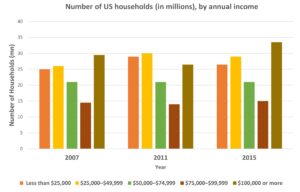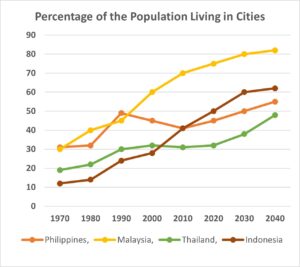How to Write Academic Task 1
IELTS Academic Task 1 requires test-takers to describe, summarize, or explain visual information in a structured, formal report. The visuals could be graphs, charts, tables, diagrams, or maps. Candidates must analyze and report key trends, differences, or stages in a process, avoiding personal opinions. Scoring a Band 9 in IELTS Academic Task 1 requires excellent language and analytical skills.



Here are some top tips to help you achieve that perfect score:
1. Understand the Task Requirements
- Clear Overview: Provide a concise and accurate overview of the main trends or features without adding unnecessary details.
- Data Analysis: Analyze the most relevant data, trends, comparisons, or processes. You don’t need to mention everything—just focus on key points.
2. Structure Your Answer
- Introduction: Paraphrase the task prompt. Avoid copying words directly from the question.
- Overview (Most Important Section): Provide a broad summary of the main trends or comparisons.
- Body Paragraphs: Organize your details logically. Highlight trends, differences, and important data. Group related information together.
3. Use Precise Vocabulary
- Varied Vocabulary: Use a wide range of vocabulary for describing changes (e.g., “increase,” “rise,” “decline,” “fluctuate,” “peak”).
- Synonyms: Avoid repeating the same words; use synonyms or alternative expressions to show linguistic flexibility.
- Adjective/Adverb Use: Add details with precision using adjectives and adverbs (e.g., “dramatically,” “slight,” “significant”).
4. Use Complex Sentences
- Sentence Variety: Mix simple, compound, and complex sentences. Avoid overusing short, simple sentences.
- Linkers and Connectors: Use linking words (e.g., “while,” “whereas,” “although”) to show contrast or cause-effect relationships.
5. Accuracy in Data Description
- Correct Grammar: Use correct tenses, prepositions, and subject-verb agreement. Mistakes in basic grammar can lower your score.
- Data Interpretation: Describe data accurately (e.g., percentages, fractions, or raw numbers). Avoid misinterpretations or vague statements.
6. Pay Attention to Detail
- Exact Data Points: Always reference specific figures, trends, or comparisons, but don’t overload the text with too many numbers.
- Units of Measurement: Always mention units like percentages, dollars, years, etc., correctly.
- Accuracy in Comparisons: Ensure that comparisons are meaningful and reflect the data accurately.
7. Practice Time Management
- You only have 20 minutes for this task. Spend 3-4 minutes analyzing the data and organizing your ideas before writing.
8. Edit and Revise
- Use the last few minutes to proofread your work, checking for spelling mistakes, grammar errors, or inconsistencies in your language or data interpretation.
Example Structure:
- Introduction: Paraphrase the question.
- “The graph illustrates the changes in X over a period of Y years.”
- Overview: Summarize the main trends.
- “Overall, X showed a significant increase, while Y remained relatively stable.”
- Body Paragraph 1: Describe one group of data.
- “Between 2000 and 2010, the value of X increased sharply from 10 to 50.”
- Body Paragraph 2: Describe another set of data.
- “In contrast, Y remained constant throughout the entire period, fluctuating slightly around 20.”
BUY: Cambridge IELTS 15 Academic Student’s Book with Answers & Audio
BUY: Cambridge IELTS 18 Academic Student’s Book with Answers and Audio
We will be glad to help you with Academic Task 1. Write to us at contact@ieltsclassesonline.com and let us know
how can we help you.
